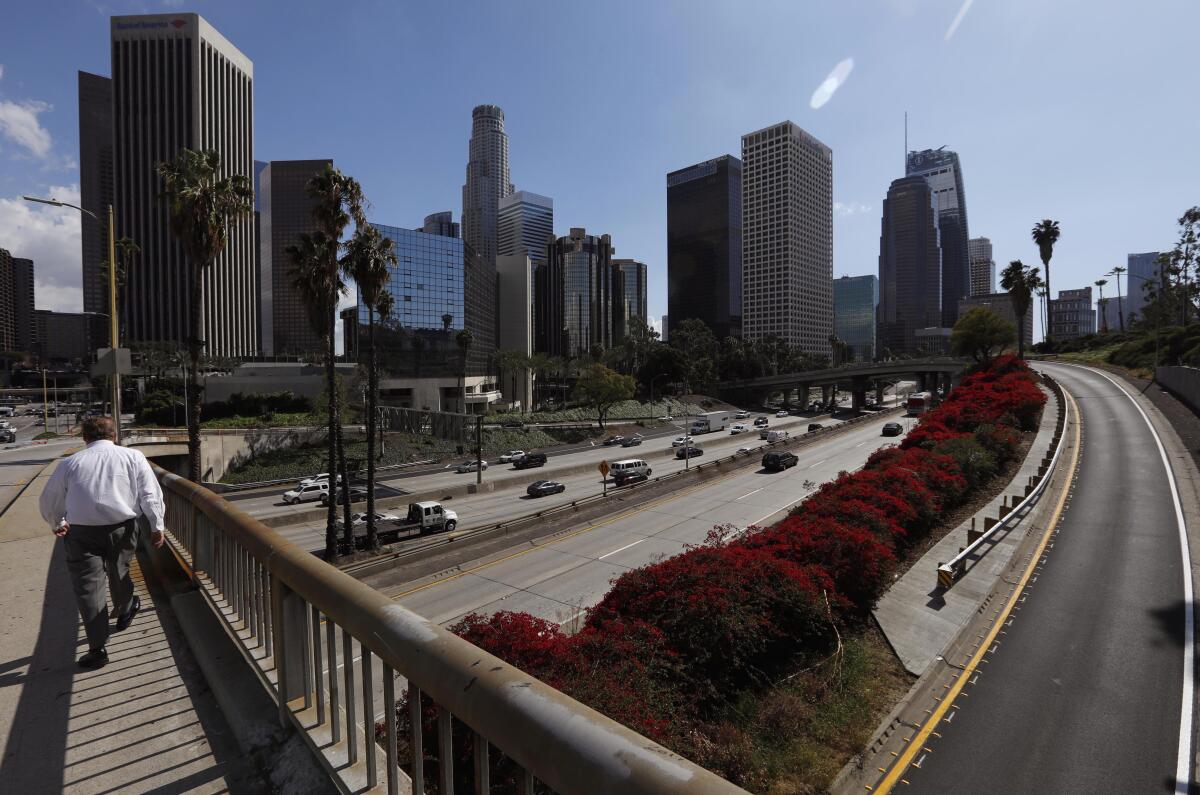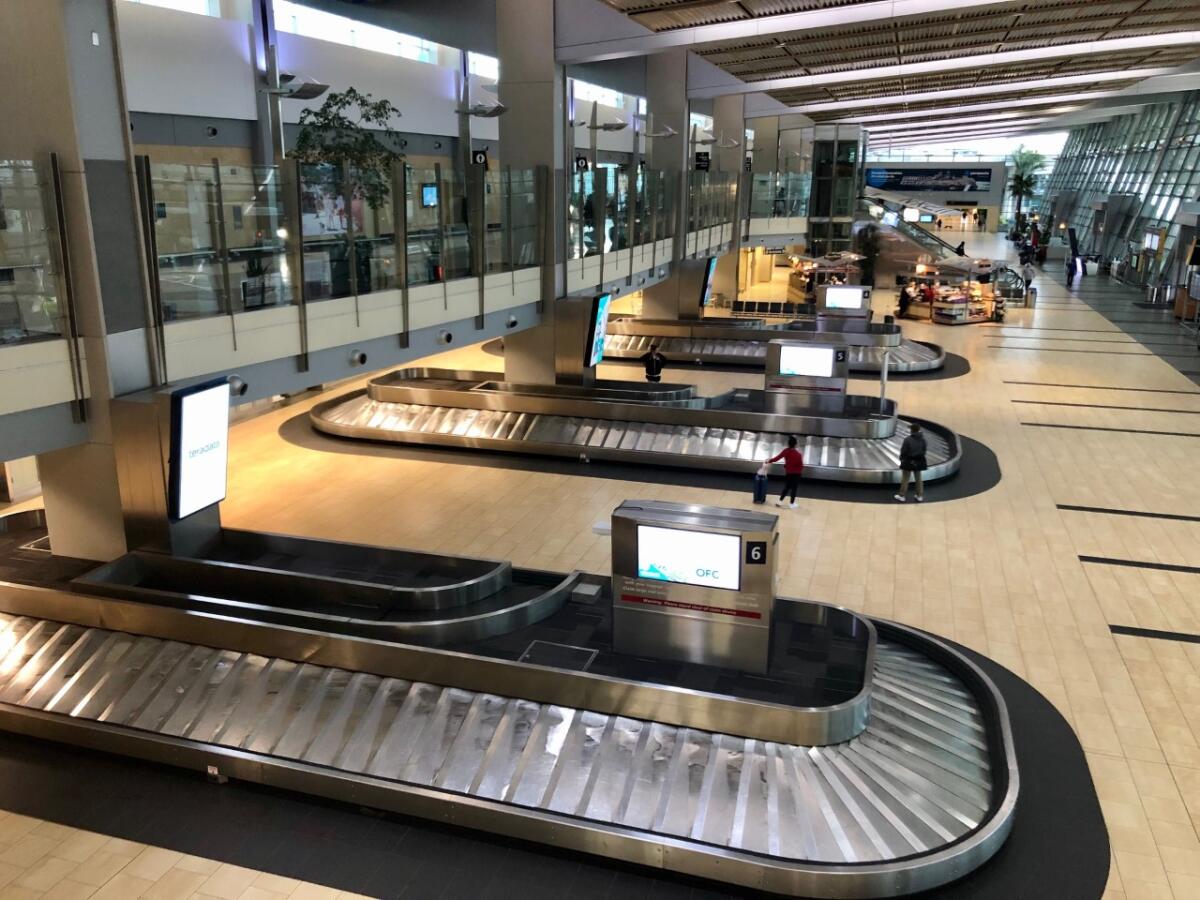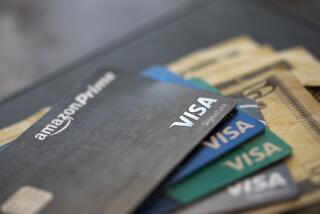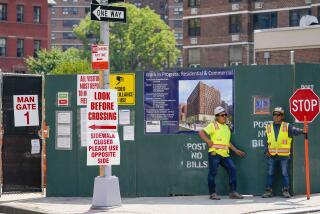Businesses are sheltering in place. How long can the economy survive that?

We’ve all seen the unsettling images of what happens when the economy goes haywire.
Bread lines, farmers abandoning the Dust Bowl, drivers queued up to fill their gas tanks, houses with foreclosure notices pounded into their front lawns.
Add to that a rush-hour view of a Los Angeles freeway, typically jammed with commuters, but now more like a Sunday morning due to a virus that has wrecked the once-booming U.S economy just two months after the first confirmed domestic case of COVID-19, the disease caused by the novel coronavirus.
Stocks have collapsed, airlines have shed routes and businesses have closed. Millions of workers are being sent home and cautioned to minimize their interactions with their friends, neighbors and even family members — a course of action the White House recommends Americans follow for 15 days.
But just how much sheltering in place can the economy take before the damage is irreversible?
The short answer is that experts are grappling with a situation as novel as the virus that caused it, and they really don’t know how much our high-tech, interconnected and consumption-oriented economy can endure.
“The longer this disruption goes on, the more likely it will have a permanent effect,” said Roger Farmer, an economics professor at UCLA and the University of Warwick in England. “Three weeks we can bounce back from, three months is not so clear.”
Yet months, even a year or longer, it may be.
The White House is preparing its response at least partially based on a frightening report from doctors and scientists at Imperial College London that concluded the virus could kill 2.2 million Americans if it is not contained. And the kind of suppression measures needed to control it, such as social distancing and school closings, could have to remain in place as long as 18 months until a vaccine is developed.
That’s a very long time, considering that it took the UCLA Anderson Forecast this week only four days to revise a quarterly prediction calling for slower economic growth into one stating that the U.S. had already slipped into a recession expected to last through September.
The forecast was responding to rapidly changing conditions and fresh data. A survey released Tuesday had already found some 18% of adults reporting that they had hours cut or had been laid off, with the workers in lower-income households hit hardest.
On Thursday, the government reported new unemployment insurance claims jumped by 70,000, or about one-third, to 281,000, the highest level in 2½ years.
One analysis by Moody’s Analytics found that nearly 80 million U.S. jobs are at varying levels of risk, though it’s more likely some 10 million workers could either be laid off, furloughed or see their hours and wages cut. In China, with four times the population of the U.S., roughly 5 million people lost their jobs in the first two months of this year amid the outbreak.
The areas of the economy expected to take the biggest hit are transportation and travel, hospitality and leisure, temporary help, and oil drilling and extraction. Outplacement firm Challenger, Gray & Christmas said 7.4 million jobs in hospitality and leisure alone could be lost or affected.
Retail, manufacturing, construction and education are at moderate risk, Moody’s said. Macy’s, with 130,000 full- and part-time workers, announced this week it was closing its stores and moving all sales online, where it has struggled to compete with competitors such as Amazon.
Treasury Secretary Steven T. Mnuchin warned Republican senators on Tuesday that without bold government action the pandemic could push up U.S. unemployment to 20%.
The numbers look scary, but economists take some comfort in the fact that the economy entered this crisis on a strong footing, with unemployment at a 50-year low. The U.S. also has social programs such as Social Security, unemployment insurance, food stamps, Medicare and Medicaid put in place during the New Deal and the later Great Society initiative of President Lyndon B. Johnson — even if they are constantly in danger of being cut back or don’t measure up to European welfare state standards.
Yet what social insurance the country has wasn’t predicated on a near shutdown of the economy, which for all its strength was already displaying well-documented gaps likely to be exacerbated by the outbreak. That includes including millions of low-income workers with little to no paid time off, a lack of affordable housing, a homelessness crisis, and rising levels of corporate debt that could send highly leveraged companies into default — which is why the local, state and national governments are considering such measures as a halt on evictions, cash payments to citizens and more than $100 billion in loan guarantees to businesses.
But trying to get a handle on how this may play out is tricky, partially because the cause is non-financial in origin, unlike, say, last decade’s crisis, which was driven by subprime mortgage defaults.
It’s also challenging that the economy has rapidly evolved. The U.S. manufacturing sector has been in long decline, replaced as an economic engine by consumer spending on goods and services. Those are huge categories that include food, clothes, appliances, electronics, furniture, cars, movie tickets, transportation, investment advice and healthcare.
It also all comes amid telecommunications and computing advances that have made home deliveries ubiquitous and working from your bedroom desk commonplace. They have also vaulted tech companies such as Amazon, Google, Facebook and Microsoft to the top of the economic food chain.
“Our economy is altogether different now than 1975,” said economist Chris Thornberg, founding partner of Beacon Economics, an L.A. consulting firm. “It’s now service oriented. Service sectors tend to be more loose and limber.”
Indeed, on Monday, Amazon announced that due to “unprecedented” demand, it plans to hire 100,000 people across the U.S. to keep up with orders as workers stay home and shop online. It also plans to temporarily raise wages by $2 an hour through the end of April for hourly employees at its warehouses, delivery centers and Whole Food stores.
Economist Edward Leamer, director emeritus of the Anderson Forecast, said that redirected spending can create an “automatic stabilizer” effect. Farmer said that the crisis will hasten economic changes that already were occurring due to technological advances, including telecommuting and online virtual meetings.
“These disruptions will probably speed that up,” he said, noting that climate advocates already had been pushing hard to reduce jet travel. “A lot of people will find that it is actually much easier.”
But many of those advantages would go to knowledge workers who sit in front of computers, such as programmers, lawyers and others in the white-collar workforce. Cashiers, waiters, construction workers and others in the blue-collar workforce don’t have that luxury as they sit at home without pay.
Farmer said that double digit unemployment would make it hard for the economy to recover. “If {workers} lose those jobs it can take years to rebuild those skills. The danger is it becomes not only a temporary drop in employment but permanent,” he said.
For now, the government is focusing on ensuring the financial and credit markets don’t seize up, preventing businesses from failing and getting cash into the hands of individuals.

In an emergency session, the Federal Reserve dropped its key interest close to zero last weekend and said it would buy at least $700 billion of Treasury and mortgage-backed securities, similar to what it did during the financial crisis. It also announced plans Tuesday to shore up the commercial paper market that provides short-term liquidity to companies to help fund their short-term operations.
The Trump administration, meanwhile, is proposing $1 trillion plus in economic stimulus, larger in size than President Obama’s after the financial crisis that would include checks of as much as $1,200 to individuals and hundreds of billions of dollars of loans or loan guarantees to small businesses and industry. Details were still being negotiated late Friday.
Separately, President Trump on Wednesday signed a measure to provide free coronavirus testing and guarantee sick leave for a significant chunk of the U.S. workforce in the event of illness from the virus and provide expanded food aid and unemployment assistance for workers out of a job because of the pandemic. The president also invoked wartime powers to boost manufacturing of medical equipment needed to fight the pandemic and the U.S. restricted its border with Canada.
Farmer supports the idea of giving every citizen a substantial check right now to help them put food on the table and buy other items. He also thinks the Treasury or Federal Reserve should take the extraordinary step of putting together a sovereign wealth fund to buy U.S. stocks and prop up the equities market, which is in full panic mode. On Friday, the Dow Jones industrial average capped off its worst week since the dark days of the 2008 financial crisis, erasing all the gains it had made since the time Trump took office.
“We want to keep normal income growing. There will be less goods but we don’t want to see businesses collapsing and bankrupt and permanent disruption,” he said.
Beacon Economics issued a report Friday, written by Thornberg, that called the virus the greatest threat to the nation’s economic expansion in more than a decade, with the next two weeks crucial in getting an understanding of how far-ranging the effects will be. But the report said it was too soon to say a lengthy recession or depression was inevitable.
The report noted the economy’s underlying strength and the fact that China, South Korea and Japan appear to have gotten the virus under control within two months. It said the economy could function with the outbreak limited to some hot spots and the nation largely “back to business albeit with a different modus operandum” — but a widespread Wuhan, China- or Italian-style lockdown would be another story.
In an interview, Thornberg said that the best comparison for now is a hurricane or earthquake that temporarily disrupts a local economy — though he acknowledged the analogy was far from perfect since such disasters are finite events that typically affect far smaller areas.
“Time after time the economy bounces back after a natural disaster type of situation,” Thornberg said. “And this to me sounds like a natural disaster, but here we have a situation where there is no endpoint.”
More to Read
Inside the business of entertainment
The Wide Shot brings you news, analysis and insights on everything from streaming wars to production — and what it all means for the future.
You may occasionally receive promotional content from the Los Angeles Times.











